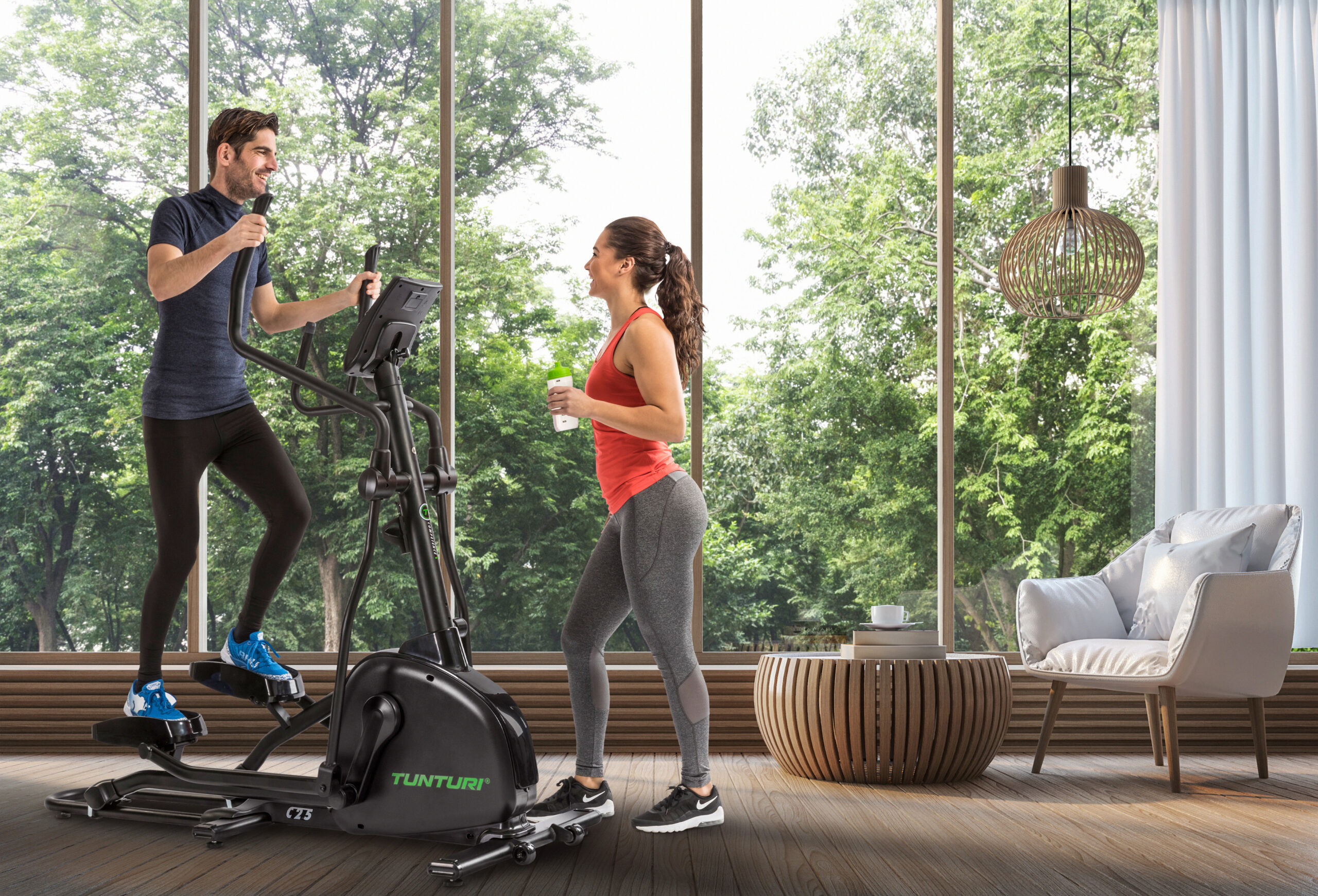
It is not always easy to choose elliptical training belts (English. k cross trainer), or even understand the differences between them – what a flywheel is or why its weight matters; whether a 50 cm stride is good; and, finally, which exercise bike is the best value. Let’s take a closer look at the components of an elliptical trainer to help you choose the right workout tool for you, without the clothes in your closet. An elliptical is great for a full-body workout, and if you’ve chosen the right machine, it will serve and exercise you for a long time.
WHY CHOOSE AN ELLIPTICAL TRAINER FOR YOUR HOME?
The elliptical trainer is a great way for people in all shapes and sizes to get an aerobic workout. Because it is easier on the joints than other gym equipment (the movement is smoother, without the shock) and does not require a lot of muscle strength to start exercising, it is also suitable for older people and people in need of rehabilitation. A few workouts a week will improve your overall aerobic fitness, strengthen your bones and increase lung capacity.
However, the elliptical can also be used for a very intense workout, giving your heart a fantastic cardio workout. The elliptical trainer works several muscle groups simultaneously in both the upper and lower body. Tones and strengthens the quadriceps, hamstrings, hamstrings, gluteus and arm muscles. It also stretches the abdomen and sides with gentle movements. To improve muscle tone, you can increase the difficulty level or keep it stable to do more cardio and lose weight. Remember – good form is achieved when you exercise regularly for short periods at a time.
During the workout, you can do more work on your arms, for example – if you want to strengthen and tone your arms, relax your leg muscles (don’t use them so much) and do more work with your arms – pull the handles back and forth. To train your legs, let go of the handles and knead with your feet only. The elliptical is adaptable to any person and offers many exercise possibilities, regardless of gender, age or ability.
Elliptical trainers are also great for extra training if you’re working towards an endurance challenge. They allow you to extend the duration or regularity of your workouts without increasing the risk of injury that resistance training can cause.
Another advantage of the elliptical trainer is the ‘ upside-down’ movement. This way, you can train a completely different area of the leg muscles – something you’d never try to do on a treadmill.
Elliptical trainers are quiet
This simple fact makes elliptical trainers the ideal workout solution at home. They are quiet for two main reasons. The first is that, unlike running, your feet do not leave the training surface and do not cause concussions. The second reason is that movement is created by your muscles rather than your engine (unlike a treadmill). The elliptical trainer has a resistance motor, but is generally very quiet. Older exercisers can become noisy and cause annoying creaking over time, but this can usually be solved by tightening the bolts on the moving parts.
COMPONENTS OF ELLIPTICAL TRAINERS
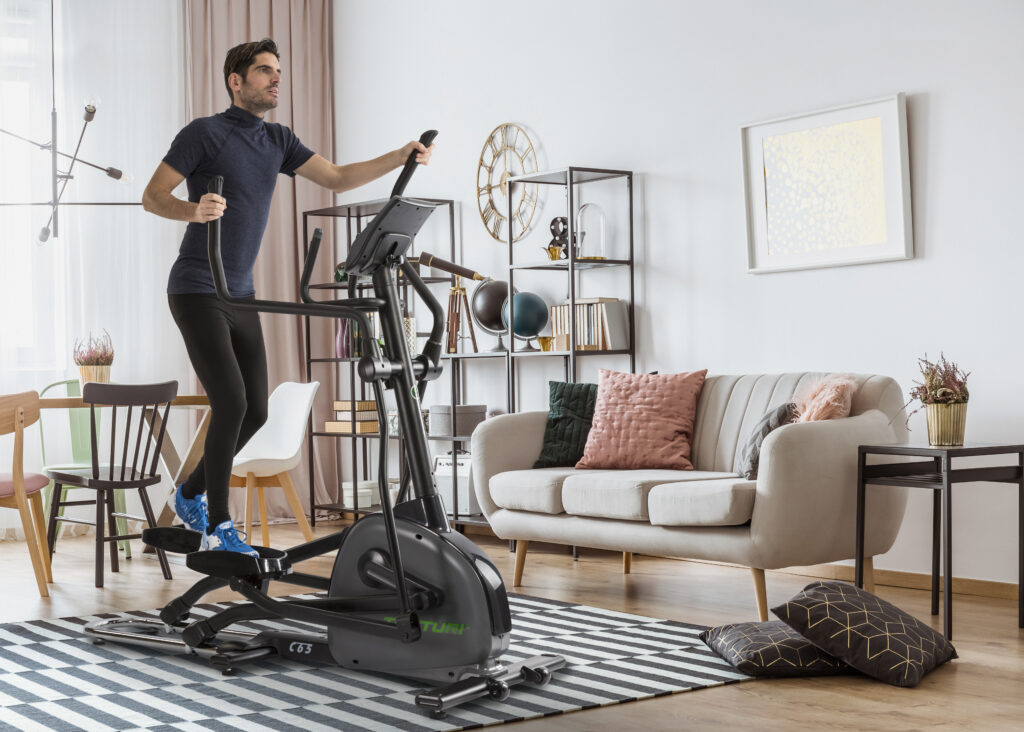
1. Drive: front or rear drive
There are two types of elliptical models: front- and rear-drive. The front flywheel is at the front, while the rear flywheel is at the rear.
On a front-impact trainer, the body tends to lean forward, giving the impression of stepping up a flight of stairs. They are usually cheaper, can be noisier, have more parts and may need more maintenance. Front-impact exercisers take up less space and the stride length may be a little short for taller people.
Rear-wheel drive exercise machines have a flywheel at the rear of the machine. The posture is upright , the movement is more natural and closer to walking and running. They are usually more expensive, quieter, smoother and well suited to longer users. Fewer parts and therefore less maintenance.
2. Handles – movable and fixed handles
Elliptical trainers have two sets of handles. Stationary handles for greater stability at higher speeds. Most stationary grips also have built-in sensors that allow you to monitor your heart rate.
The movable handles with synchronous pedals also give the arms a workout, toning the arms and exercising the shoulder and back muscles.
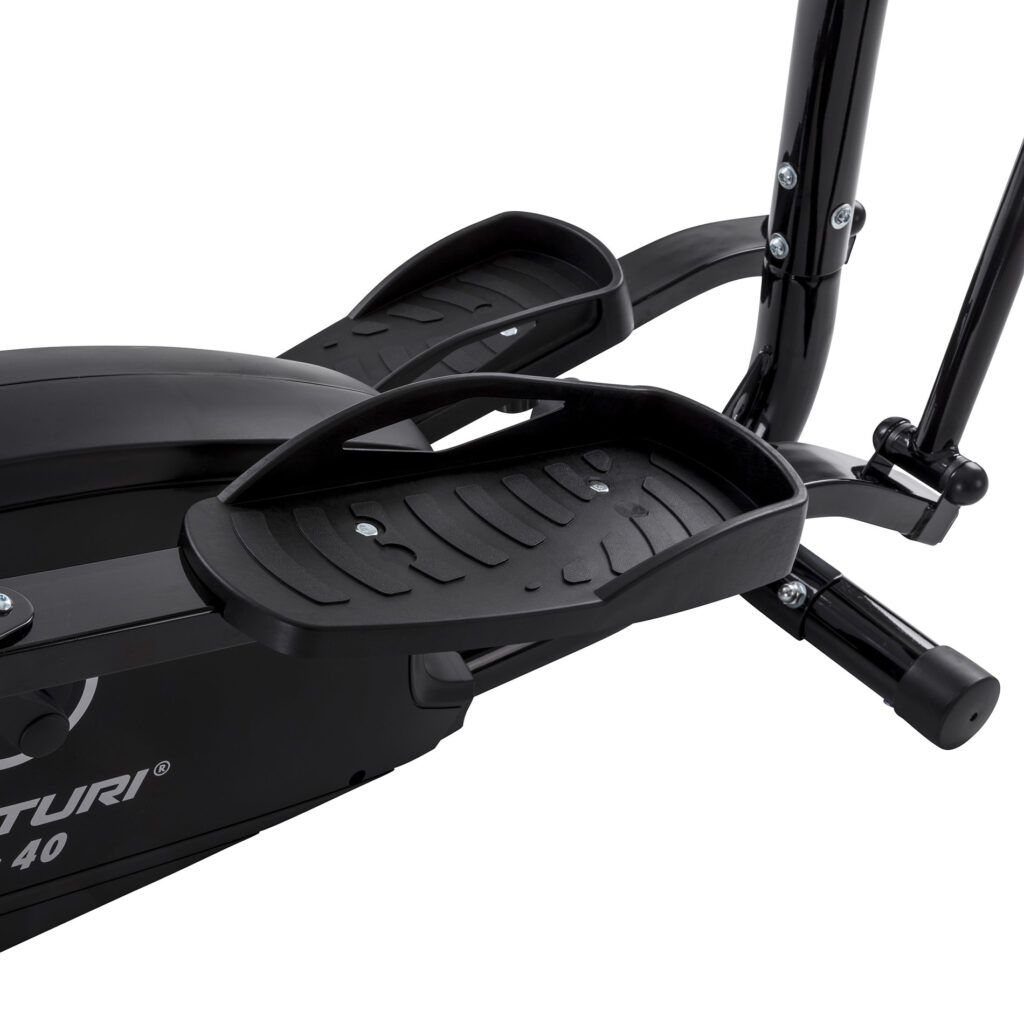
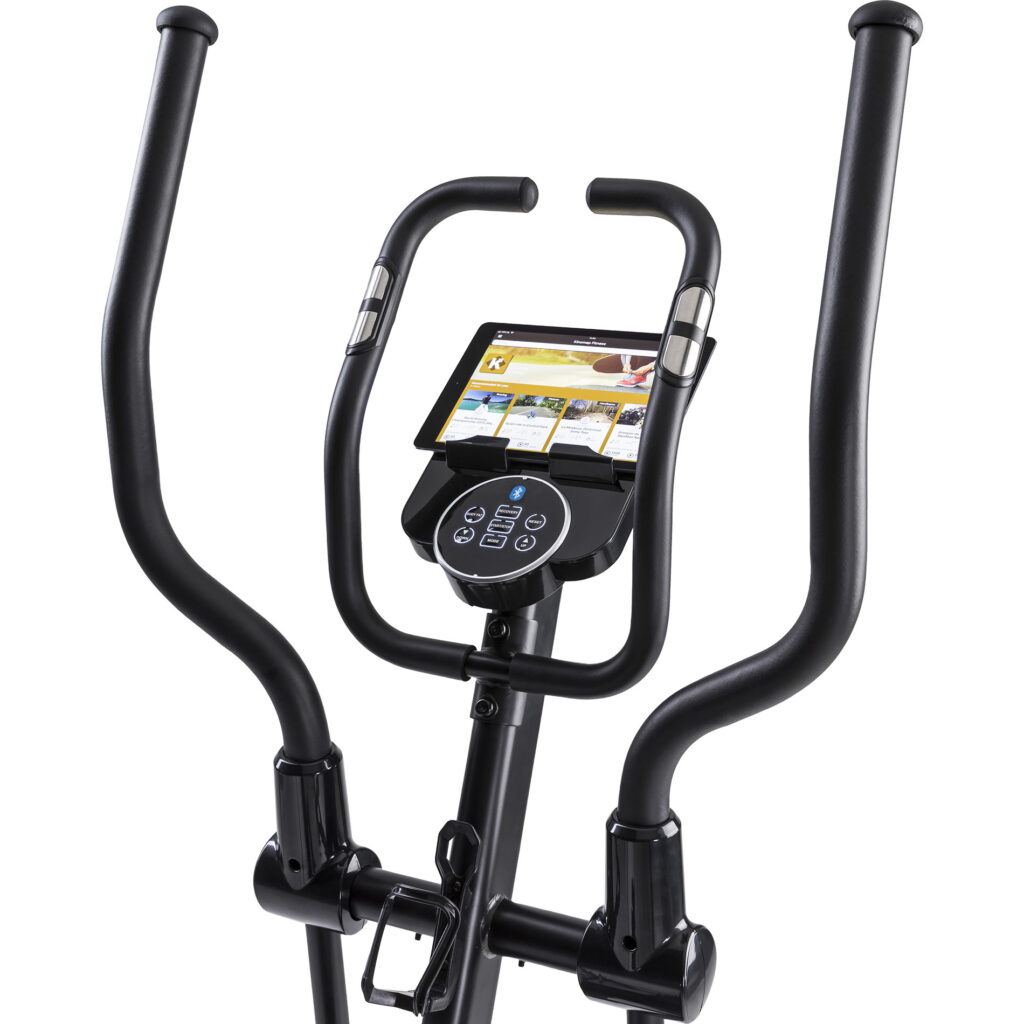
3. Length of step
The length of a step is the distance between two pedals when they are furthest apart. The short stride length gives a kind of stepping motion. A longer stride length mimics more of a running movement.
The length of the stride also affects the comfort of the workout – if it’s too short, it feels like you’re walking in small steps. If the length is too long, the strides feel too big and can overload the muscles. The right step length depends on your height. The taller you are, the longer your stride must be.
For users less than 175 cm tall: stride length 30 or 40 centimetres.
For users over 175 cm tall: stride length 40 or 50 centimetres.
The length of the stride is also one of the most important criteria when choosing an elliptical, as it determines the amplitude of the movement of the legs and consequently the pedalling comfort. The aim is not to take as long a stride as possible, but to take a stride of sufficient length so that the movement of the legs is not too restrained or too limited. A step length of 40 cm is generally recommended. With a shorter stride length, you may feel that your movements are limited, your stride is less elliptical and your pedalling is closer to that of a stationary bike or stepper. If the stride is long enough, you can fully extend your legs with each movement.
The length of the step is more or less related to the size or length of the elliptical machine. The smaller elliptical trainer also has a shorter stride length. Ellipticals smaller than 130-135 cm usually have a stride length of 30 cm or less. Don’t opt for a smaller trainer at all costs to save space, as the length of the stride is likely to be shorter. If you plan to use the elliptical regularly at home and are not aiming for competition level, a stride length of 40 cm is more than enough and offers a good range of motion. If you’re taller than 1.90 m, we recommend you choose an elliptical trainer with a stride length of more than 50 cm.
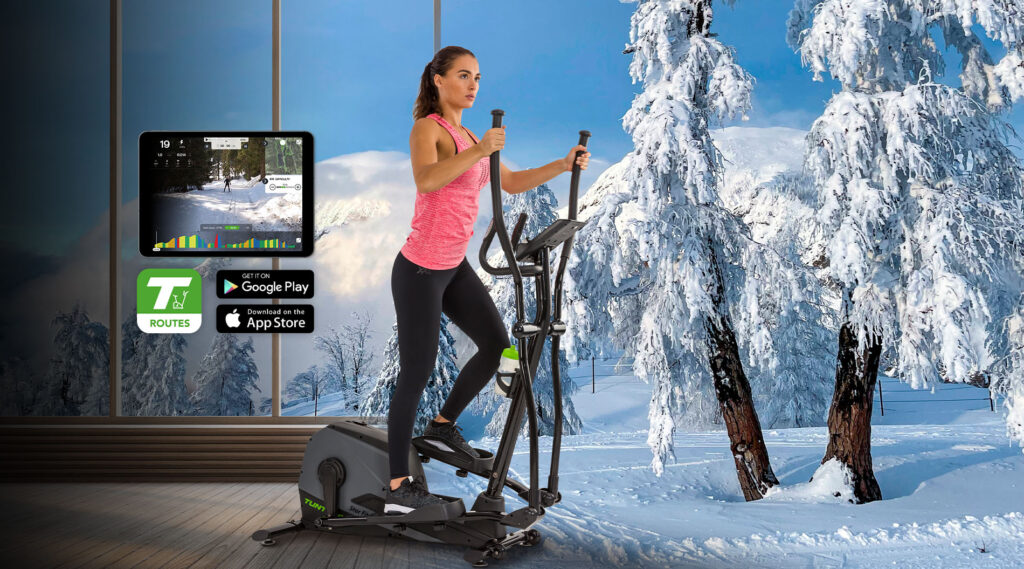
4. Mechanical or magnetic resistance?
On a mechanical resistance trainer, the pedalling weight/resistance is increased by manually turning a knob, while the magnetic resistance can be changed directly from the console of the elliptical trainer. The latter is also known as a motorised braking system. Virtually all elliptical trainers now have magnetic resistance, as it offers much greater comfort and allows you to monitor your cardio workout by automatically changing the resistance level.
5. Wadding level
The meters measure pedalling power based on walking or pedalling speed and resistance level. Manufacturers of elliptical trainers specify a maximum power, which gives an indication of the maximum resistance of the wheel. The wattage indicates the quality, or rather the power, of the elliptical trainer (this could be compared to the maximum speed of a car: even if you don’t reach maximum speed, it gives an idea of the quality of the machine).
6. Braking system
You can choose between an electromagnetic brake system (EMS) and a manual permanent magnet (PMS). In the case of an EMS, the resistance is determined by the tractive force applied to the flywheel. This force is controlled by conducting higher or lower currents through magnets. On the screen, you select the resistance, then the magnets come into position by induction. Therefore, EMS does not use an engine or moving/mechanical parts. With manual PMS, the magnet moves with the rotary knob, allowing the resistance to be selected. Finally, in the case of a PMS servo motor, you select a resistance on the screen, after which the servo motor sets the magnets in motion.
7. Hooratta weight
Do you want a more intense workout with higher resistance? Then choose an elliptical trainer with a heavier flywheel. A heavier flywheel offers more opportunities for additional training levels. If you’re not looking for an intense workout, but just a light workout to maintain and improve your fitness, a lighter flywheel is also suitable.
The weight of the load is one of the main criteria you should carefully consider when buying an elliptical trainer, as it affects the quality, comfort and smoothness of pedalling. A flywheel that is too light, 7-10 kg, will cause uncomfortable pedalling with jerking.
The weight of the load determines the resistance of the elliptical trainer to speed change or acceleration. In other words, the heavier the flywheel, the more resistance you will feel when accelerating, which means that you will have to pedal more to reach a certain speed (you will not reach your maximum speed immediately).
Basically, when accelerating with a very light flywheel, you will immediately reach the desired speed (acceleration drag is very low) and the bike will stop as soon as you stop pedalling (deceleration drag is low or non-existent). A heavier flywheel elliptical trainer therefore offers greater pedalling smoothness, comfort and workout/exertion (a little effort is needed before reaching a certain speed).
> 21 kg For professional use (2-3 times a day)
11-21 kg Frequent use (1-3 times per week)
7-10 kg Occasionally (1-2 times a month)
8. Ergometer
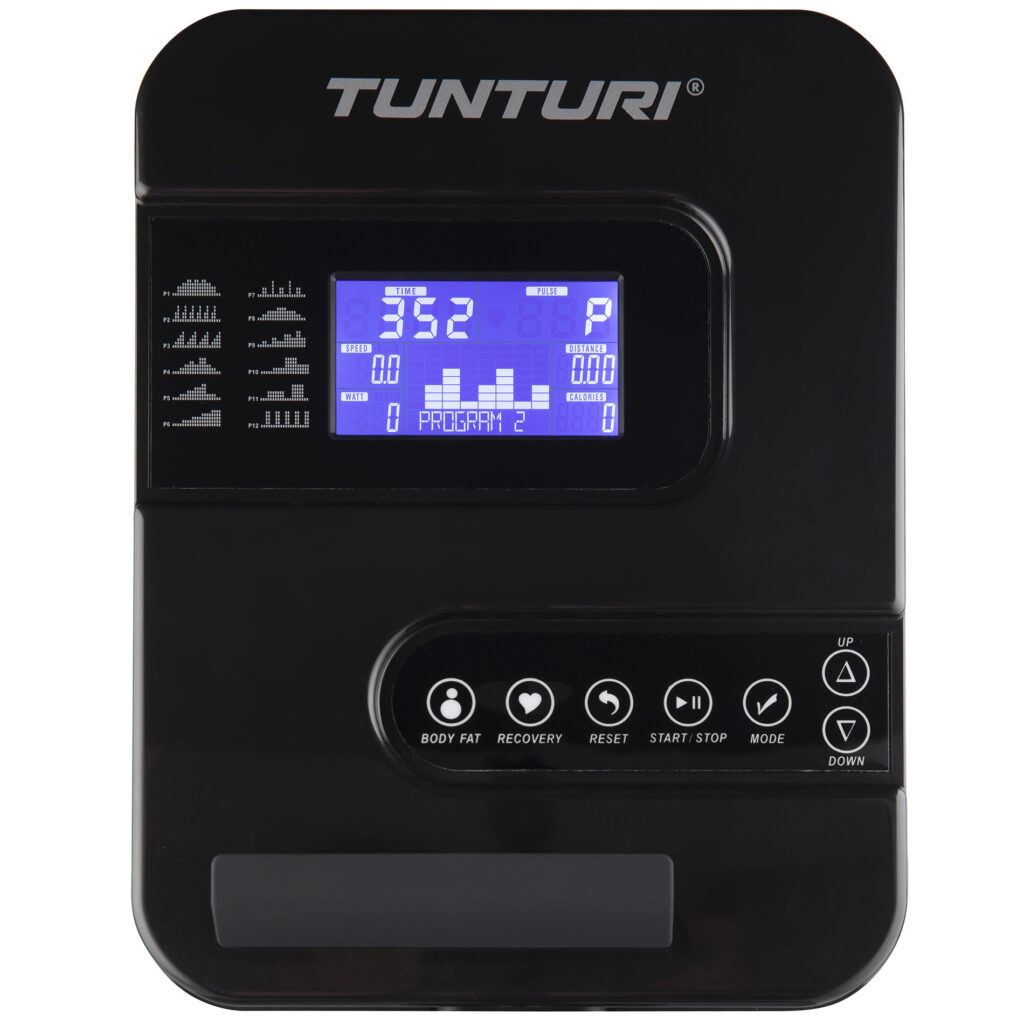
Want to know how well you are training and what progress you are making? An ergometer helps you achieve your training goal. By entering your details, such as height and weight, you can train very precisely at the intensity you need and see what your calorie expenditure is.
10. Number of programmes / resistance levels
Today, almost all elliptical trainers have different exercise programmes and/or difficulty levels. The use of different exercise programmes can help to achieve good results and also add variety to your workout. It is very well suited for changing the tempo between different levels of difficulty.
11. Annexes
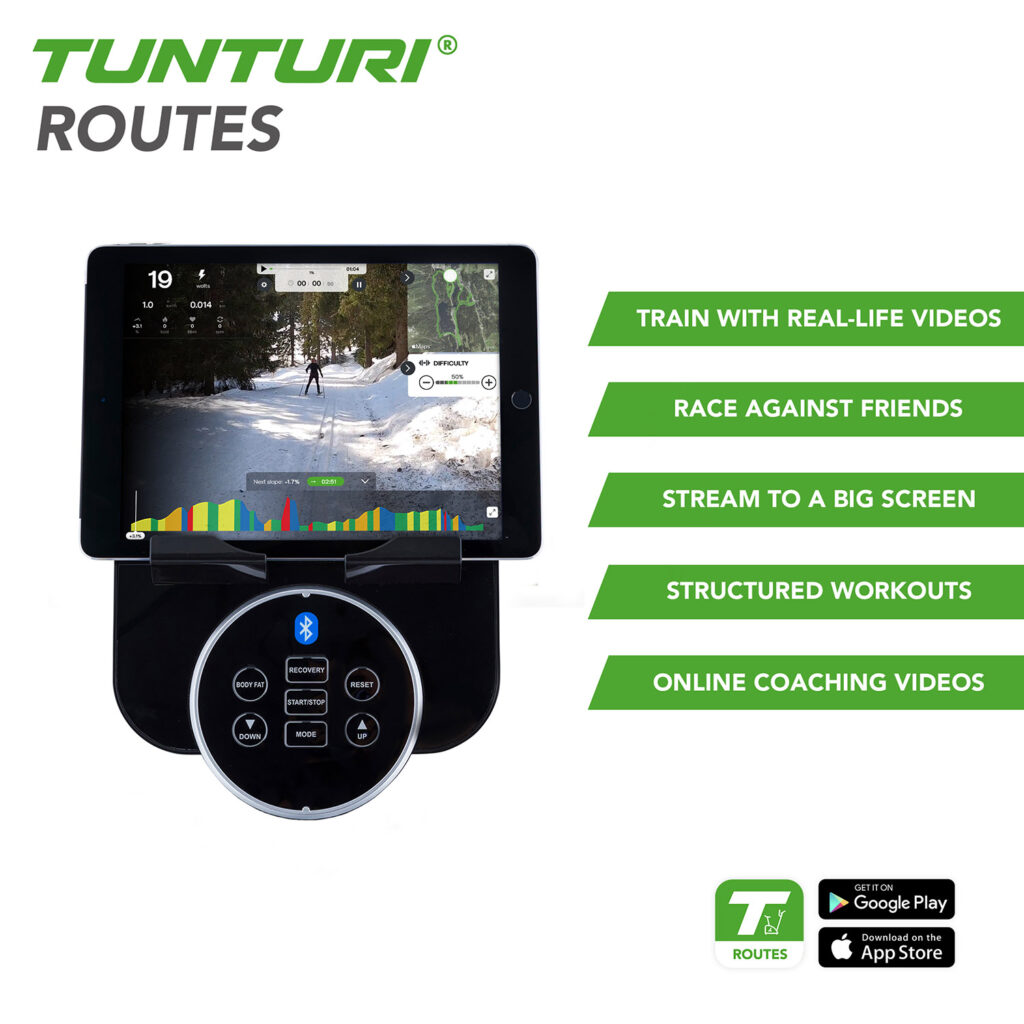
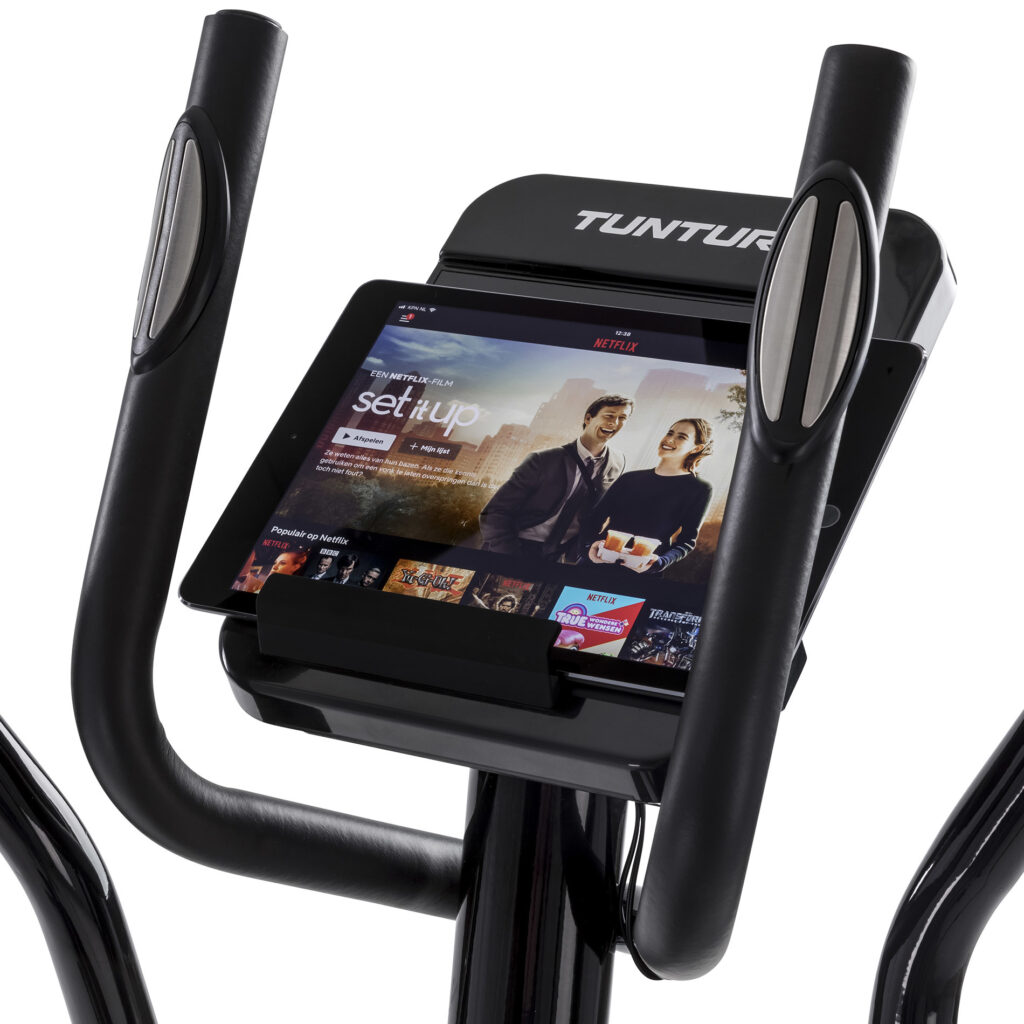
Many elliptical trainers also come with a number of accessories, such as a bottle holder, tablet holder. More and more ellipticals offer Bluetooth connectivity, which allows you to wirelessly connect your phone or tablet (including iPhone or iPad) to your elliptical. This allows you to place your phone on a bike console and use it as a touch console. So you can see your pedalling speed directly on your smartphone or tablet and control your pedalling difficulty on your smartphone! Various mobile apps allow you to track your cardio and HIIT workouts, adjust your exercise routine and monitor your statistics, such as the number of calories burned. Bluetooth connectivity is a plus, making workouts more interactive.
TUNTUR TRAINERS AND FITNESS PRODUCTS
Velomarket is the official distributor of Tuntur trenazers and we have a wide range of home training equipment. If you’re interested in strength training at home, you can find dumbbells, dumbbells, kettlebells or other additional weights and accessories in the Velomarket range. If you’re looking for a more serious gym workout, there’s a workout bench to suit you. For gymnastics at home, Velomarket offers a range of massage equipment, gymnastics and yoga mats, gymnastics balls, stretching bands and other equipment from the Tunturi range.
The tundra literally means “big mountain”, symbolizing the overcoming of challenges and the feeling of accomplishment that comes after intense training and self-transcendence.
The Tunturi began in 1922. in Turku, Finland, when brothers Aarne and Eero Harke opened a bicycle shop, Pyöräkellari Oy. Initially, the main focus was on repairing bicycles, and then the company itself produced bicycles under the Tunturi name. The brand was very successful and within a few years the small shop was replaced by a factory and by the 1950s the Tuntur brand was the leader in the domestic moped market. Using the technology and knowledge gained from bicycle manufacturing, Tunturi expanded into the production of other sports equipment.
1969. In 2008, Tunturi transformed the fitness industry by introducing the world to the first pedal ergometer for home use, and a year later, it gained international recognition as a manufacturer of sports equipment.
In the 1990s, a strategic decision was made to focus on the production of Tuntur fitness products and Tuntur bicycles. This decision was important for the further development of the brand. Tunturi is now a well-known brand in Scandinavian countries and Tunturi fitness products are sold in more than 40 countries worldwide.
 Eesti
Eesti Русский
Русский Suomi
Suomi Latviešu
Latviešu


